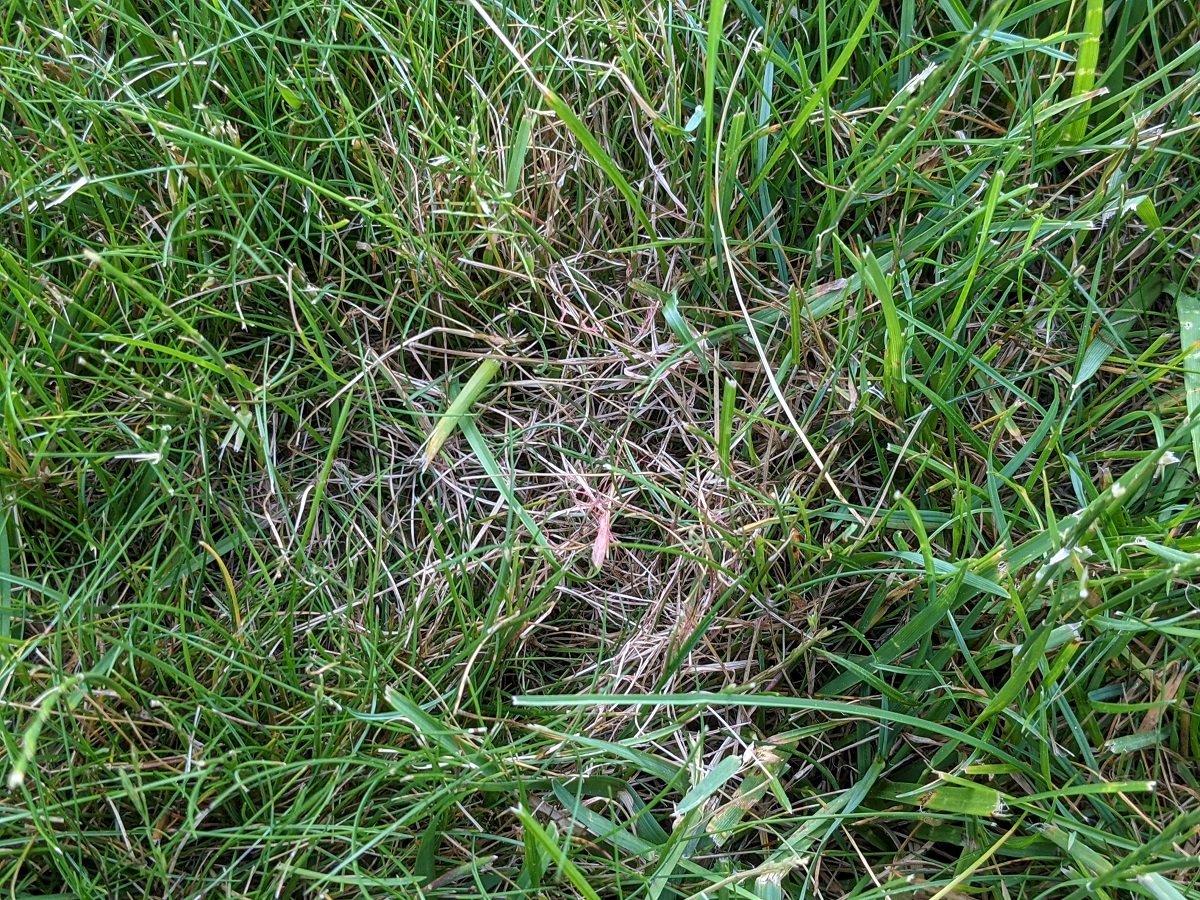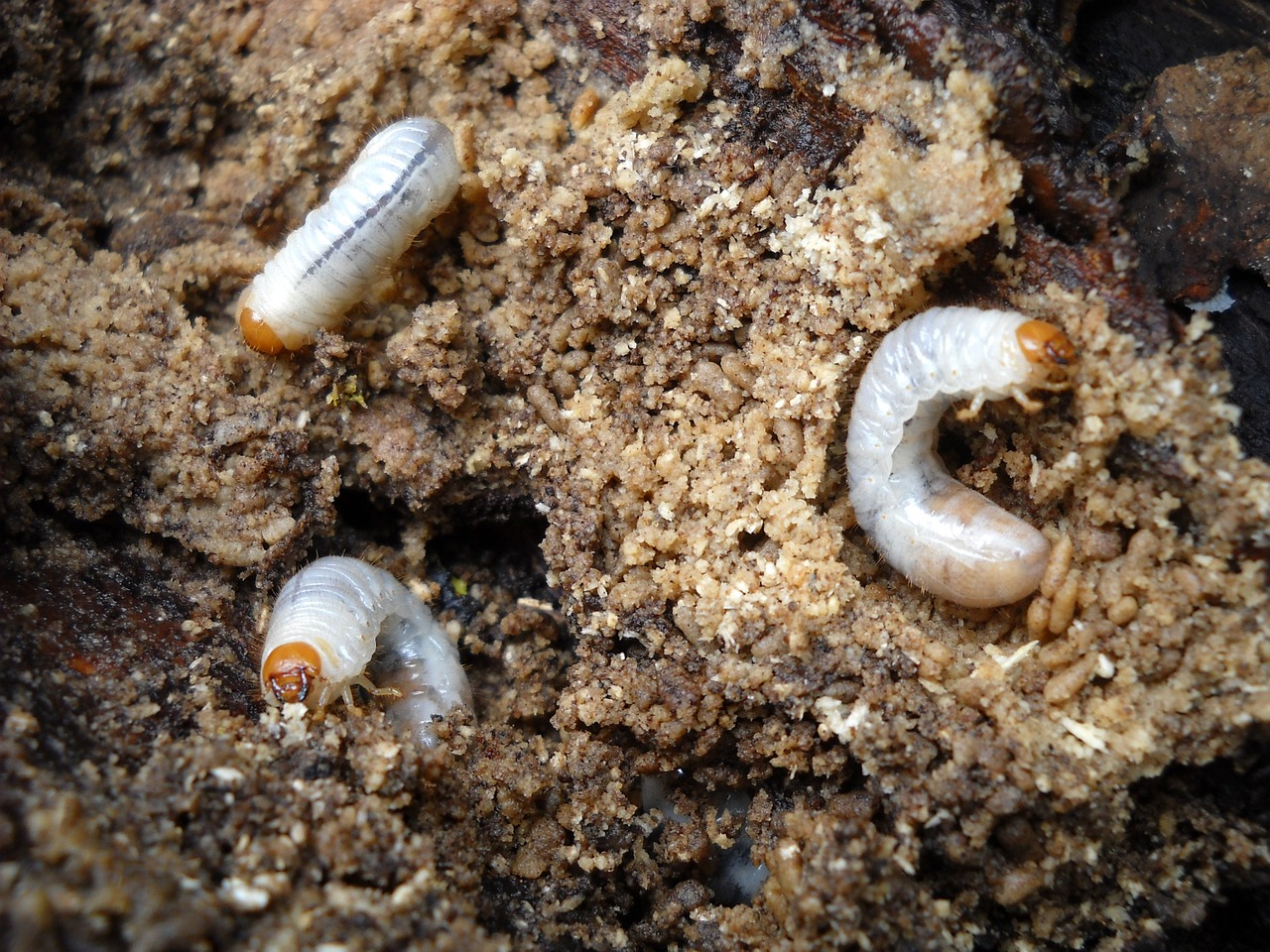
Why Your Lawn Has Brown Spots & How to Fix Them This Summer
Finding brown spots in the lawn can be a major source of frustration for homeowners. Unfortunately, figuring out why you’re seeing brown grass can be a little more complicated than you might realize.
There are multiple reasons why grass can turn brown and it’s going to take some sleuthing to get to the bottom of it.
In this article, we’ll dive into everything you should know about seeing brown grass in your New England lawn. We’ll help you understand some of the possible reasons this might be occurring and what you can do about it.
We’ll cover:
Possible Causes of Brown Spots in Lawn
Is Brown Grass Dead? (Dormant vs. Dead Grass)
How to Treat Brown Spots on the Lawn?
Choosing Lawn Care in Southern NH, Northeastern Massachusetts, and Southern Maine
Possible Causes of Brown Spots in Lawn
 As we’ve mentioned, there can be numerous reasons why you might have brown spots showing up in the lawn.
As we’ve mentioned, there can be numerous reasons why you might have brown spots showing up in the lawn.
Drought Stress
When lawns are not receiving enough water, they can definitely turn brown. Often, they will turn pale green or yellow first. Other signs that a lawn is in drought stress is when grass is wilted or when it doesn’t bounce back up after walking on it (footprints are left behind). If moisture is unavailable, lawns can go into a state of dormancy and turn brown. This is actually a defense mechanism to protect the lawn. We’ll talk more about this in the next main section.
Lawn Disease
Brown grass can also be the result of lawn disease. Brown patch lawn disease is a common one in our region and as the name implies, causes brown spots in the lawn. Brown Patch commonly affects all cool-season grasses but has been known to be particularly harmful to perennial ryegrass and tall fescue. This disease is caused by the moisture-loving fungus Rhizoctonia solani.
We also commonly see Red Thread as a culprit of brown grass in New England. Caused by the fungus Laetisaria fuciformis, this lawn disease thrives in hot, wet conditions and appears as a stringy reddish-pink substance on grass blades eventually leading to struggling spots in the lawn.
Spotting lawn disease early on is always helpful. This is why lawn disease inspections are included in all of our lawn care packages at Seacoast Turf Care. Having a lawn care professional on your property regularly will ensure they are able to inspect for early signs of trouble.
Insect Damage
Another common culprit of brown spots in the lawn is insect damage. Grass-eating bugs can cause damage to your lawn by feeding at the surface or even beneath the surface (on lawn roots). The lawn pests that we most commonly deal with in the New England Seacoast region include grubs, chinch bugs, cutworms, armyworms, and sod webworms.
Nutrient Deficiencies
 A lack of nutrients or other soil health issues (like a pH imbalance) can also be the reason behind lawn discoloration. Usually a lawn with deficiencies will turn yellow but extreme issues could lead to the lawn turning brown. Proper fertilization plays a vital role in promoting a healthy and green lawn.
A lack of nutrients or other soil health issues (like a pH imbalance) can also be the reason behind lawn discoloration. Usually a lawn with deficiencies will turn yellow but extreme issues could lead to the lawn turning brown. Proper fertilization plays a vital role in promoting a healthy and green lawn.
Is Brown Grass Dead? (Dormant vs. Dead Grass)
As we alluded to in the section on drought, brown grass is not always dead. When not receiving enough water, grass can enter a state of dormancy as a mode of protection against stress. Grass also goes dormant in the winter to deal with extreme cold-weather conditions.
One clue that your lawn has entered dormancy is if the brown grass is uniform. In other words, if your entire lawn turned brown and it’s not just brown spots in grass, it might be dormant.
You can also use the season as a clue. Brown grass in summer can be a bit more complicated since there are many potential causes (as we’ve highlighted above). Looking at the uniformity will be key. But brown grass in winter is likely in a dormant state.
There’s also something called the “tug test” to determine if brown grass is dead or dormant. If you tug at the grass and it comes out easily, it’s probably dead. It’s no longer attached by a strong and healthy root system. But if you tug at the grass and it stays put, it’s probably dormant.
How to Treat Brown Spots on the Lawn?
In order to treat brown patches in the grass, you must first figure out what caused them. Diagnosing some of the potential problems that we’ve highlighted above can be tricky as the symptoms can often mimic one another. You have to be a bit of a detective (or really confident in your Googling) to try to figure out what’s going on.
Obviously paying attention to the conditions is a key factor. If there has been limited rainfall and your lawn has other symptoms like wilted grass and dry, cracked soil, it’s probably in drought stress.
Diagnosing lawn disease vs. pest problems can be a bit more complicated as sometimes the brown spots in the lawn are your main clue. You can do some sleuthing to try and make a diagnosis. Surface-feeding insects, like chinch bugs, can sometimes be spotted by getting down at the turf level and exploring.
Grubs, which feed on grass roots at the subsurface level, might not be visible. But if your grass is detaching from the ground (no longer attached by roots), that’s a good indicator grubs are feeding on it. You might also notice increased bird or wildlife activity as many animals feed on lawn grubs.
In addition, the circular patches from lawn disease are often more regular than patches from insect feeding (which are irregularly shaped, depending where they’re moving). And sometimes lawn disease has other symptoms like powdery substances or other visible fungus.
Ultimately, ensuring the proper diagnosis will boil down to working with a lawn care professional. They will be able to help you identify exactly what your lawn is dealing with so that you can then implement solutions.
There are treatments for insects and diseases that can be implemented (and preventative strategies going forward). Nutrient deficiencies can be solved with lawn fertilization. And drought issues can obviously be addressed with watering.
Choosing Lawn Care in Southern NH, Northeastern Massachusetts, and Southern Maine
It helps to have a lawn care expert on your side when it comes to dealing with lawn problems. It can feel overwhelming trying to get to the bottom of what’s going on with brown grass. But a lawn care pro can diagnose what’s going on and help you determine the best course of action.
At Seacoast Turf Care, we want to be your partner in success. We know that a healthy lawn is important to you and we want to help. We provide lawn care services in Southern NH, Northeastern Massachusetts, and Southern Maine.
Lawns can be a lot of work, but you don’t have to take care of yours alone. We’re here to help.
Want to learn more about what makes us a great choice for your lawn care needs? At Seacoast Turf Care, we service NH towns near Stratham, North Hampton, Exeter and many more. Get lawn care pricing for your Southern NH, Southern Maine, or Northeastern Massachusetts property.
Image Sources: dormant grass, drought stressed lawn


